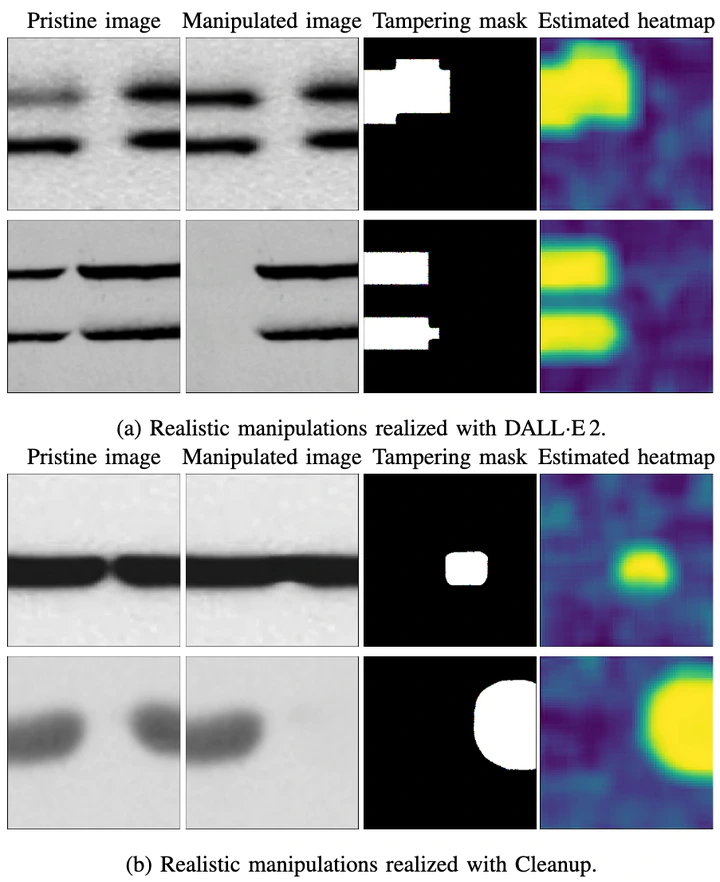
Abstract
Recent breakthroughs in deep learning and generative systems have significantly fostered the creation of synthetic media, as well as the local alteration of real content via the insertion of highly realistic synthetic manipulations. Local image manipulation, in particular, poses serious challenges to the integrity of digital content and societal trust. This problem is not only confined to multimedia data, but also extends to biological images included in scientific publications, like images depicting Western blots. In this work, we address the task of localizing synthetic manipulations in Western blot images. To discriminate between pristine and synthetic pixels of an analyzed image, we propose a synthetic detector that operates on small patches extracted from the image. We aggregate patch contributions to estimate a tampering heatmap, highlighting synthetic pixels out of pristine ones. Our methodology proves effective when tested over two manipulated Western blot image datasets, one altered automatically and the other manually by exploiting advanced AI-based image manipulation tools that are unknown at our training stage. We also explore the robustness of our method over an external dataset of other scientific images depicting different semantics, manipulated through unseen generation techniques. We release our experimental code and the manipulated datasets at https://github.com/polimi-ispl/western-blot-synthetic-manipulation-localization.